Posted by: Ken @ 7:32 am
This evening, just before dark, a lovesick female Mottled Duck showed up on our back lawn, quacking plaintively at intervals. She must have been attracted to the bright yellow bill of our latest “yard bird.” The difference in bill color is the only visible feature that differentiates the sexes of Mottled Ducks, so it must be a very important attribute. Females have orange to greenish bills. Since Mottled Ducks, like most other puddle ducks, doves and woodpeckers, are almost always seen in pairs, it was unusual to find a single unattached female just hanging around at the edge of the lake, ogling the newest addition to our back yard “menagerie.”
Here is the object of her affection (but do look closely!)
I apologize for anthropomorphizing, but hey, ask any duck hunter whether a decoy can actually fool a bird.
Our latest Yard Bird cost us $1K plus. We obtain our lawn irrigation water from the backyard lake, a pretty good deal, considering that household sewer charges are greater than and keyed to domestic water utilization. Now the downside– the lake water is full of debris, including mud, vegetation, small fish and snails that can be sucked into the inlet, clogging sprinkler heads, increasing back-pressure and damaging pumps. The filter screen on our intake had deteriorated, and the float that kept the intake off the bottom of the lake sprung a leak. Result? Sucked-up mud led to a burst main feeder line (under our deck, no less!), requiring excavation and re-routing of half our sprinkler array. So much for “free” water! Our new “unsinkable” float is this nice Mallard, quite a departure from the Canada and Snow Geese that keep our neighbors’ sprinkler intakes up off the bottom.
As if this were not enough, as I was photographing the unrequited lover in the fading light, I looked over at our neighbor’s Canada Goose float and, for the first time ever, found it was being used as a fishing platform by a Great Blue Heron!
At sunrise, only a couple of weeks ago, the wetlands next to our subdivision were eerily quiet. On the way in, I checked the levee to see whether there were any Bobcats hunting there. Mary Lou kept walking up the gravel road, as I told her I would catch up with her in a moment. No Bobcats were present, and indeed the place seemed nearly devoid of birds. Even the mockingbirds were not singing.
The silence was broken by an energetic Carolina Wren who poured out his song.
I waited patiently and took about 20 photos as the wren lurked about in the brush. Here, he paused quietly out in the open for a photo op.
Small flocks of Yellow-rumped Warblers foraged in the treetops.
In the meantime, Mary Lou had continued more than a half mile down the road. She likes to get aerobic in the morning, but, too often, I stop to “smell the roses.”
We met up when she was on her way back. At the lake’s edge, we saw this Tricolored Heron chasing after fish in its usual haphazard and aggressive manner.
Suddenly, the heron took flight and then immediately dove headfirst into the water in pursuit of prey, kingfisher style! I was not quite ready, and this is not a very good shot, but I was amazed to see its head and neck under water and both of its legs sticking up.
A Great Egret cast a quiet reflection.
I continued alone to the end of the road, where I was pleased to see that a few Yellow-crowned Night-Herons had returned to the area where they had nested last spring.
This week there has been a notable increase in the dawn chorus. Cardinals and towhees were singing vigorously. Red-winged Blackbirds were staking out territories and singing “Conk-ra-lee,” their red epaulets expanding with each burst of song.
This Northern Cardinal’s plumage looked a little worse for wear.
Love must be in the air. A cozy pair of Northern Flickers shared a distant wire, ignoring an American Kestrel.
Later, the kestrel was back on the wire, this time almost shoulder-to-shoulder with a Loggerhead Shrike!
I heard at least four different Eastern Towhees singing along a 3/4 mile stretch of road. Growing up in New Jersey, my first edition Peterson field guide simply gave them the name of Red-eyed Towhee or “Chewink,” after its common call. They sang a well-enunciated “Drink your Tea.” These Florida birds usually sing a version that sounds like “Tip=tip tee-tee-tee-tee-tee-tee.”
This male was probably a local resident, as it has white eyes. Birds from southern Georgia and Florida have straw-colored to white irises.
Another towhee had decidedly reddish eyes, indicating it was likely a visiting migrant from further north.
Interestingly, the red-eyed towhee was accompanied by a female with pale eyes.
The Trema trees attracted Gray Catbirds…
…and Northern Mockingbirds.
We performed our regular welfare check on the local eagle nest. This year there is only one eaglet, the ninth offspring recorded during the five seasons the nest has been under observation. The female was standing watch, and just as we arrived, the male swooped in dramatically to join her.
The female flew off and the male departed for about an hour, returning with a fish, which it fed to the eaglet.
We named her/him “P. Piney Nine.” Click here for a summary of key events in the life cycle of this pair of eagles over five seasons.













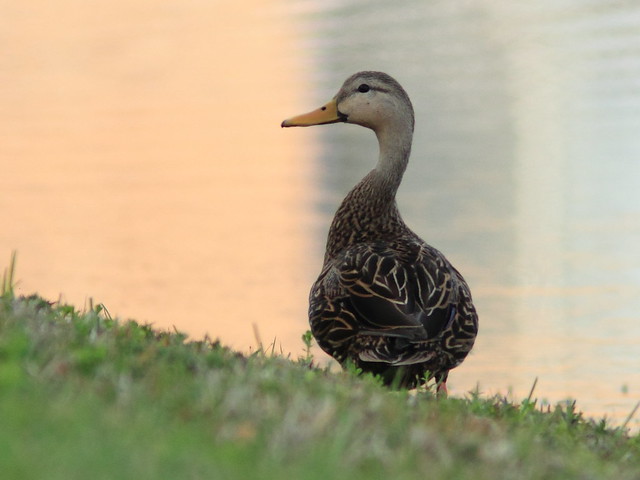
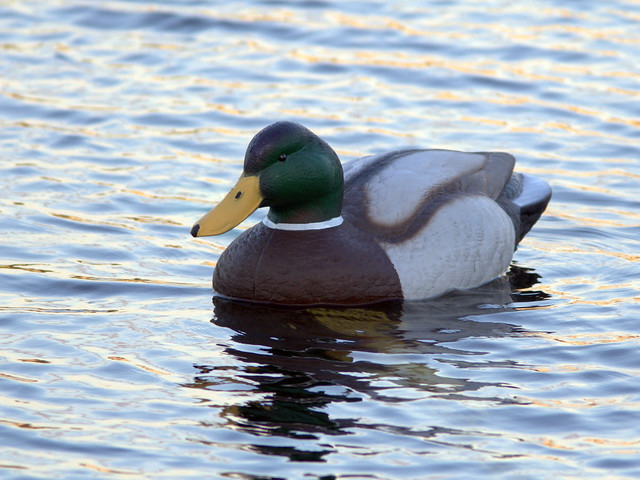
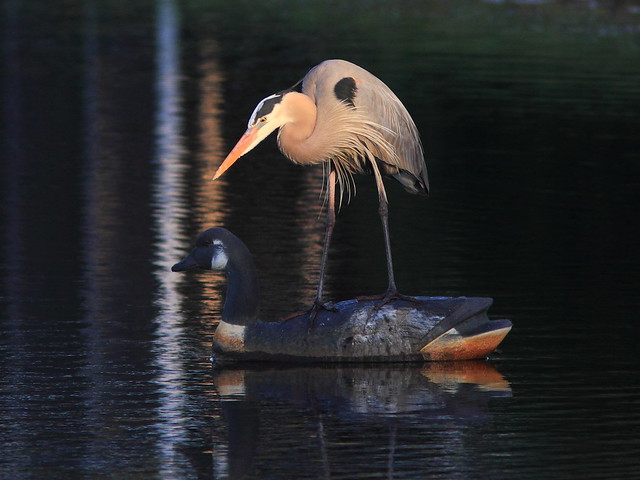
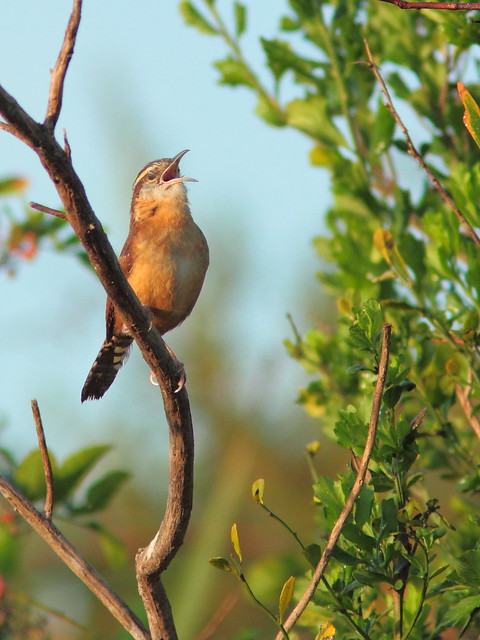
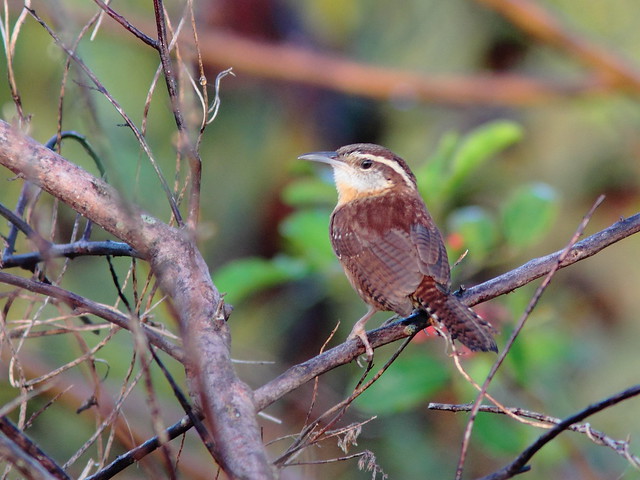
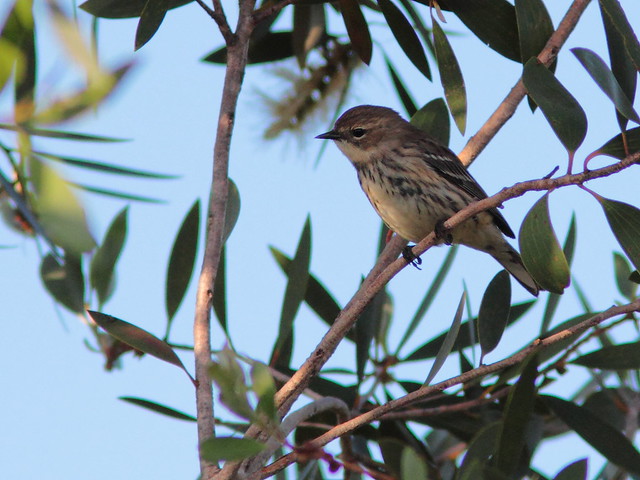

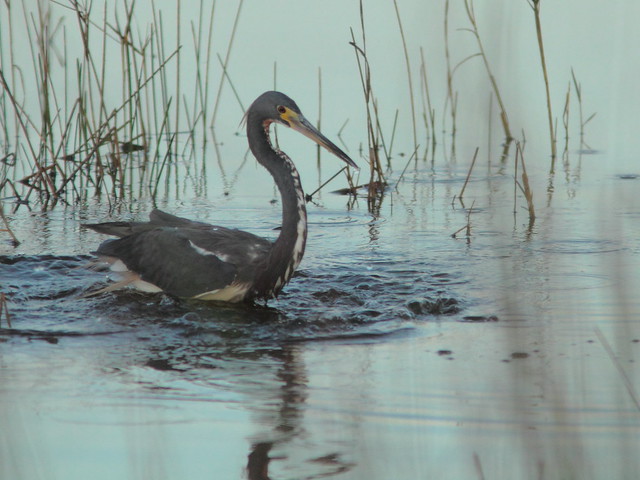
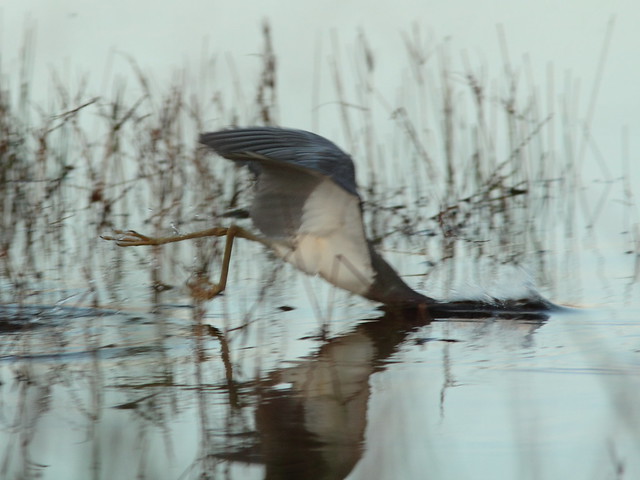
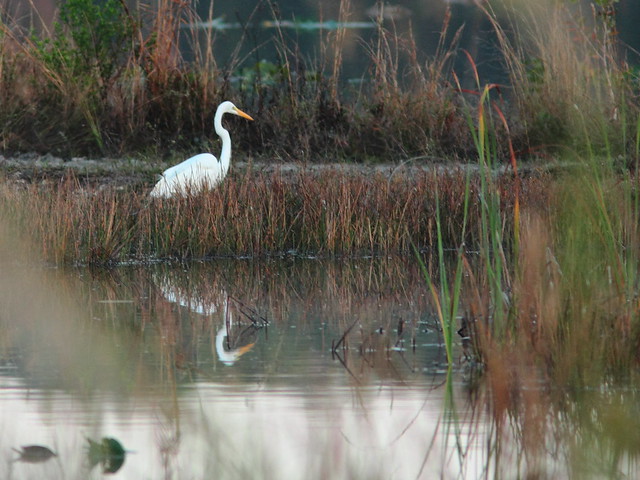
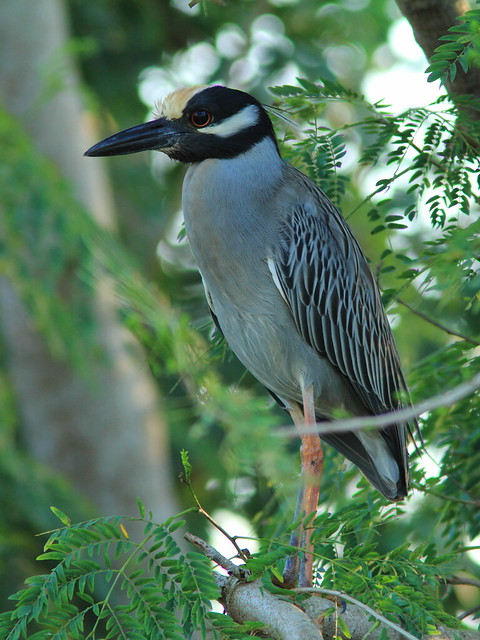

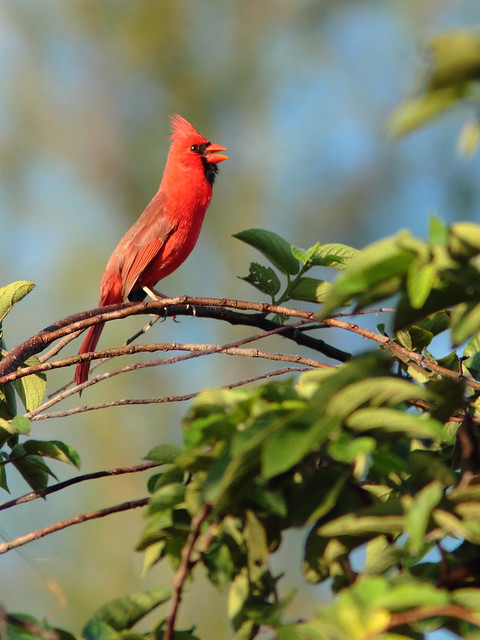
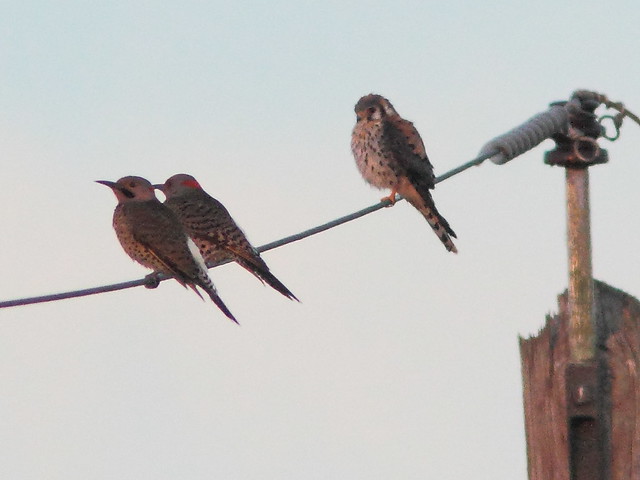
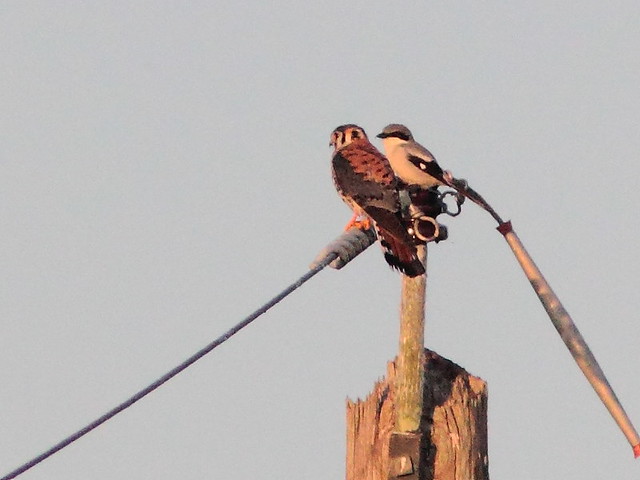
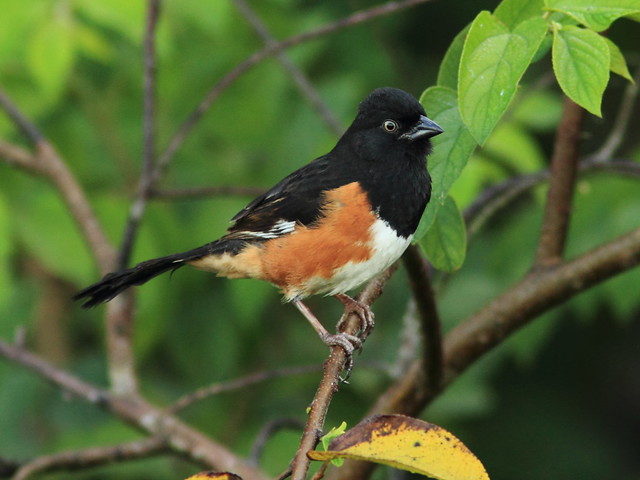
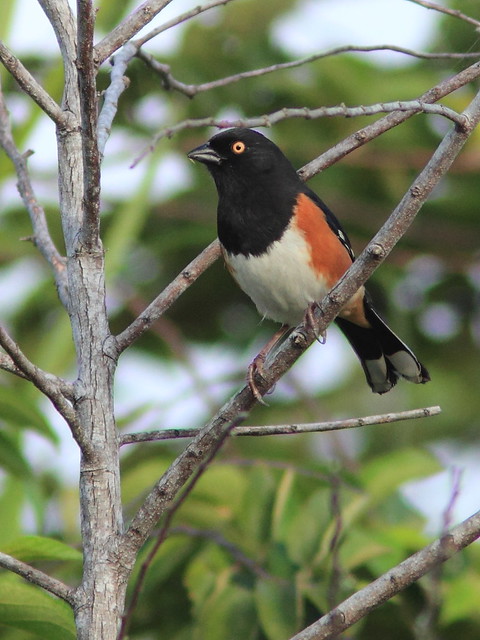
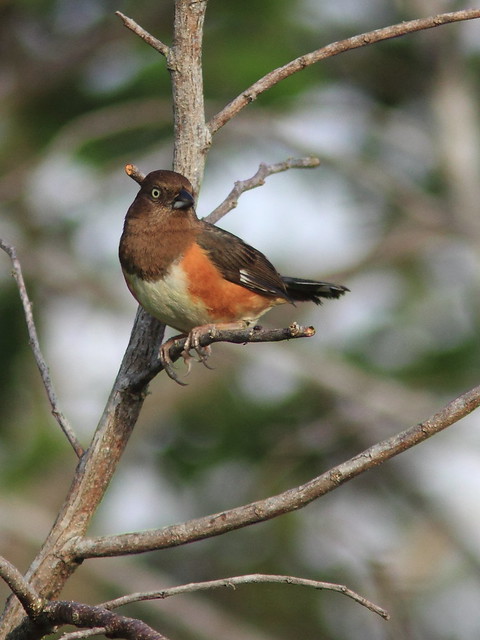

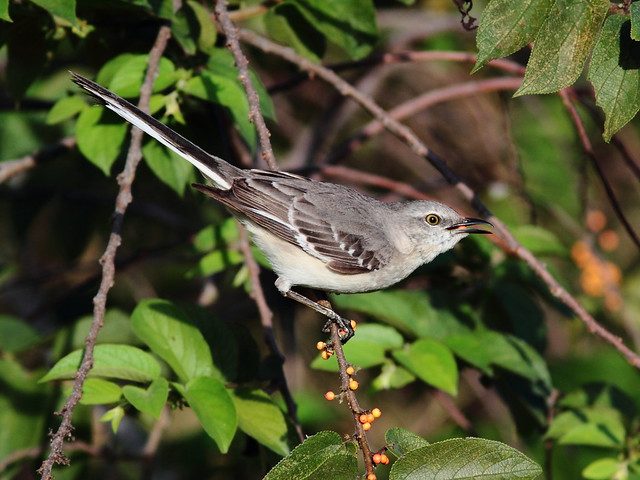
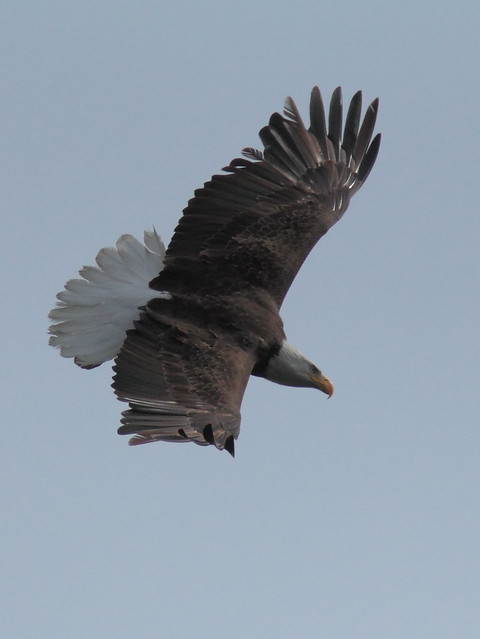
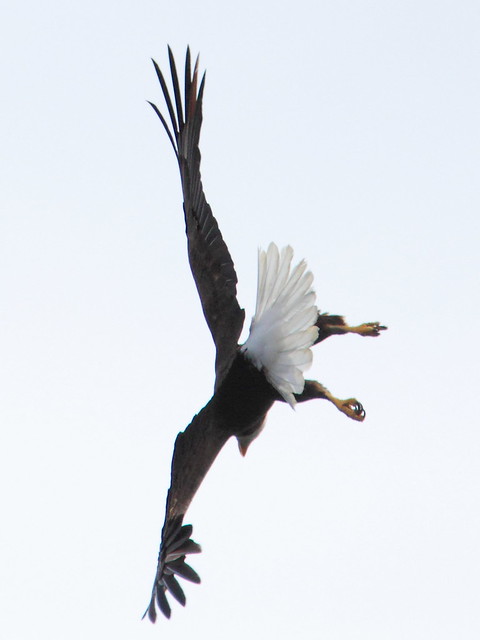
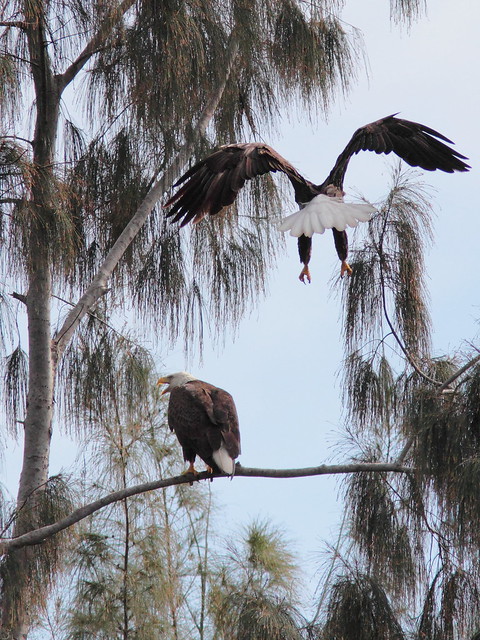
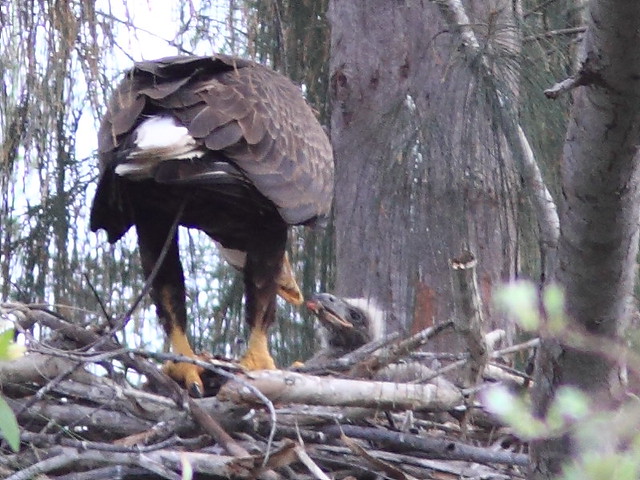
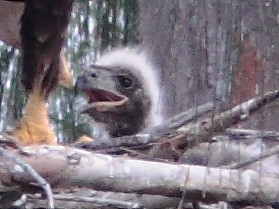
February 25th, 2012 at 12:38 pm Wonderful shots as always. I’m from Jersey, didn’t realize you were also. North Jersey in my case. You?
February 25th, 2012 at 1:36 pm Great photos! Love the Yellow Crowned and the Towhees. It’s always a pleasure to see your new posts.
February 26th, 2012 at 10:07 am Wow, Ken! These are amazing photos! I love the YC Night Heron. And the kestrel next to the flickers is cool. Awesome captures of the Towhees. Great birds! Happy Birding!
February 26th, 2012 at 11:28 pm Great pictures, Ken: thanks again. I especially like the shot of the diving heron: haven’t seen that.
February 28th, 2012 at 11:46 am There’s so many great photos I can’t decide which one I like best. I think I would have to pick the heron standing on the decoy…that’s just too funny! Fantastic shots, Ken!
February 28th, 2012 at 12:17 pm Wonderful sequence!! Boom & Gary of the Vermilon River, Canada.
February 28th, 2012 at 1:27 pm Amazing photos. I love the heron perching on the goose decoy. I think the eagle photos are my favourite.
February 28th, 2012 at 2:16 pm Wonderful images of all you birds Ken but the Yellow-crowned Night-Heron is fantastic to see.. a newbie for me.
February 28th, 2012 at 3:44 pm Vry good post!!!
February 28th, 2012 at 4:05 pm Wow I am amazed over how many wonderful birds you got to see. So beautiful and interesting post!!
February 28th, 2012 at 5:44 pm What a pleasure going on your walk with you Ken. What a day! Your Carolina Wren shots are marvelous and the American Kestrel with the Shrike; absolutely incredible! The Yellow-crowned Night-Heron is gorgeous and a bird I have yet to see. But the Great Blue Heron standing atop the Canada Goose, priceless!
February 28th, 2012 at 5:48 pm so many wonderful photographs to soak up. I especially loved the night-heron! That Canada Goose float looked so real at first I thought …?! A great capture too
February 29th, 2012 at 6:34 am An amazing set of pictures Ken. First rate. When I saw the Great Blue Heron using the decoy goose as a fishing platform, I burst out laughing. Priceless! Great capture of the fishing Tricolored Heron.
February 29th, 2012 at 10:18 am Wonderful shots of the wildlife encountered on your walk, Ken! I really love the little Carolina Wren singing in the tree and the downy head of the eaglet.
February 29th, 2012 at 3:01 pm Gorgeous post, and the third photo is smashing!
March 1st, 2012 at 2:04 pm What a great area for wildlife and humans..
April 12th, 2012 at 1:17 pm Thank you, all, for your kind comments!